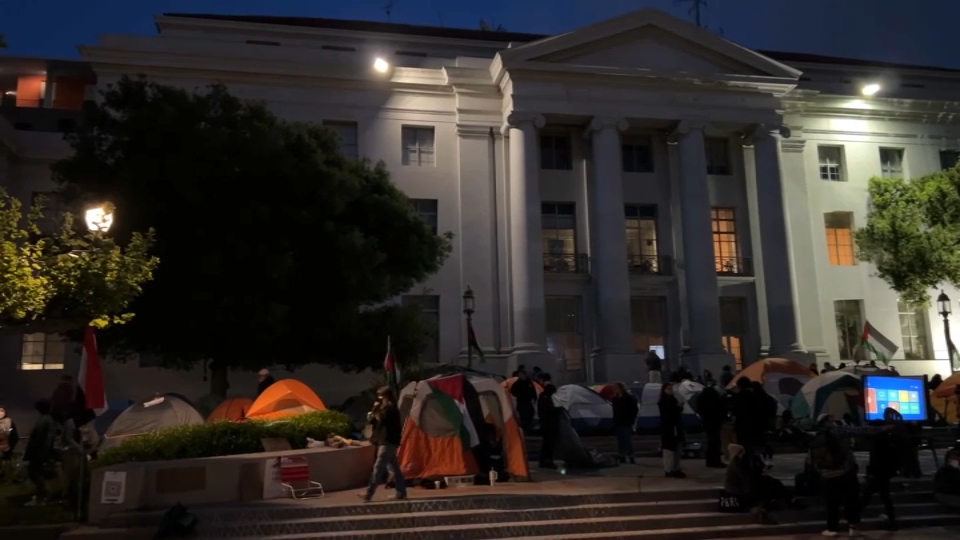The San Francisco Juvenile Probation Department says it is providing detainees with their legally mandated hour of outdoor exercise per day, but it has not provided data substantiating that claim, according to the city's Board of Supervisors and Youth Commission.
The board asked William Siffermann, the chief of juvenile probation, for the data in May, after David Chiu, board president, said supervisors had heard anecdotal evidence that detainees were not getting their hour of exercise.
Mario Yedidia, director of the Youth Commission, said Siffermann has "told us in no uncertain terms that he would not be providing us with that data because it would violate the confidentiality of detainees."
Advocates for juvenile detainees say that the hour of exercise is crucial for the young offenders' physical and mental health.
Siffermann said this week that his staff does not log the participation of each detainee in outdoor activities, but that he has begun providing the commission with information on the overall daily use of outdoor recreation spaces, and that he would do the same for the board.
A 2010 state evaluation of the city's Juvenile Justice Center, a detention facility near Twin Peaks that typically houses 50 to 80 young offenders who are 13 to 18 years old, found no code violations of any kind.
In an interview on Monday, Chiu asked, “I’d like to understand how the department passed state standards if they have yet to provide us the data to demonstrate that they’re in compliance.”
Local
Siffermann is adamant that the Juvenile Justice Center has maintained compliance with outdoor time and exercise regulations by utilizing small courtyards adjacent to each of the living units in the afternoon and a gymnasium during school hours.
But Youth Commissioner Angel Carrion, 20, who served two years in the hall before joining the commission, said the one-hour afternoon recreation period is the only time youth are able to go outside, and only four or five are allowed on a courtyard at once.
“If each unit has 20 youth, how are they all allowed equal chances to go outside when there is only one opportunity to do so during the weekdays?” he said. “It’s impossible.”
The commission, a group of young people ages 12 to 23 that makes policy recommendations to city leaders, drafted a resolution in February asking the board to ensure that detainees were getting enough time outdoors.
In a personal letter to the mayor and Board of Supervisors, Layla Welborn, a nurse at the hall, endorsed the recommendation, describing the “mostly bare cement rooms” where youth are confined for much of the day as less than “optimal conditions for physical or mental health for any human being.”
Such conditions exacerbate maladies often found in detention centers, she wrote, including headaches, insomnia, anxiety, depression and self-inflicted harm. Vitamin D deficiencies, which can be helped by direct sunlight, can lead to increased rates of upper respiratory infections and mood disorders, both of which are exceedingly common among detainees in San Francisco’s juvenile hall, she added.
The Bay Citizen reported in February that the Youth Commission was pressing probation officials to allow detainees use of a large outdoor recreation area at the center. The space – which includes basketball and volleyball courts, a kickball diamond and a soccer filed with natural grass – had not been used since it was built in 2006 as part of a $47 million renovation. By using the larger yard, the commission argued, more detainees would be able to spend more time outdoors.
Siffermann said the large yard had not been used because of design flaws that created security risks and required more staff supervision than his budget would allow.
“Until such time as we can ensure the public’s and our kids’ safety while they’re out there, we’re going to have to make do with the areas that we have,” he said.
Making the entire yard safe to use would cost between $120,000 and $300,000 for capital improvements and between $260,00 and $340,000 for extra staffing, according to estimates by his department.
Although the Youth Commission urged Siffermann to request capital improvement funds for the yard during the city’s budget hearings in June, Siffermann said his department needed money for a new fire notification system, more security cameras and infrastructure repairs.
“We’re not out of compliance with respect to our physical activity program and our recreation programs so we really try to target the things where we’re not in compliance ,and actually our roadways and parking lots are not safe,” he said.
Allen Nance, assistant chief probation officer, said that since limited use of the large yard began, the staff at the hall has already noted positive results.
“The feedback I’m getting is that the young people seem to be calmer once they’ve had an opportunity to get out on the yard area,” he said. “They’re more engaged, and the staff’s ability to manage the kids’ stress is enhanced.”
While the Youth Commission and the Board of Supervisors say such reports provide more reason to ensure that the hall documents detainees’ outdoor time, Nance and Siffermann said they were surprised by the commission’s critical tone.
“I understand they’re disappointed that the yard improvements didn’t get into a high enough priority in our capital wish list, but what they’ve accomplished here has changed the practices inside the institution and allowed our staff to better manage the youth in there,” Siffermann said. “In five months, that’s remarkable.”
This story was produced by The Bay Citizen, a nonprofit, investigative news sources in the Bay Area and a part of the Center for Investigative Reporting. Learn more at www.baycitizen.org.



